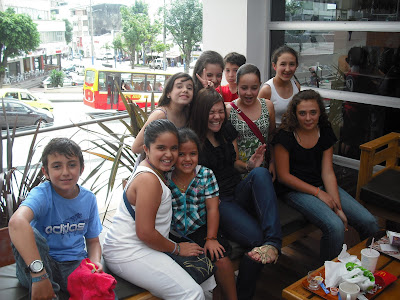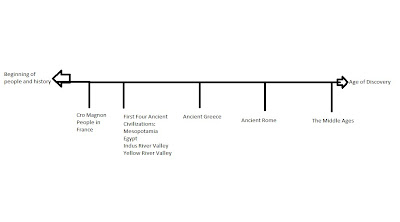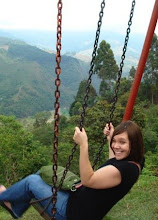Fill in the Blanks:
Council of Ministers, Senate, laws, president, departments, capital, Risaralda, judicial, Chamber, welfare, taxes, constitution, human rights, democracy, flag, economy, land
1. Colombia's government is a democracy and a welfare state.
2. The capital of Colombia is Bogota de Santa Fe.
3. Colombia is divided into 32 departments.
4. Pereira is the capital of the department Risaralda.
1. Colombia has three branches of government. The executive branch includes the President and vice-president.
5. The executive branch gets advice from the Council of Ministers.
6. The legislative branch makes laws.
2. There are two parts of the legislative branch, the Chamber and the Senate.
3. The judicial branch is the Supreme Court. The Supreme Court is a group of judges who make sure that laws are fair.
4. A document called a constitution explains how Colombia's government works. It also protects human rights.
5. Human rights are things that every one should have, life a safe home, clean water, and an education.
6. To pay for things, like education, the government collects taxes on income, property, and purchases.
7. Governments choose a system of how the money and businesses will work in a country. This is called an economy.
8. A country needs to have LAND to exist because otherwise it would only be an idea.
9. A flag is a symbol of a country. The colors represent the country.
Write the word that matches each definition below.
Example: 1. I'll give you a mango if you give me a banana
Answer 1. barter and trade economy
2. The place on the map that shows what things are, like capital cities> Map Key
3. A religion that believes in more than one god: polytheistic
4. A religion that believes in only one god: monotheistic
5. What all of the first four civilizations were built near: Rivers
6. The system of money a country uses, like Colombia's peso: currency
7. Shows direction on a map: compass rose
8. Shows distance on a map: map scale
9. A person who makes maps: cartographer
10. A native Indian culture that was conquered by Hernan Cortes. It's capital city is where Mexico City is today.: Aztecs
11. When one person has all the power in the country: Dictator
12. A country that has representatives, like Ancient Rome: republic
13. People own businesses, and the government only bothers the businesses if something bad happens.: capitalism
14. People vote directly on laws. This is what Ancient Greece had.: democracy
15. Knights or kings own huge farms and poor people work on the farms. The knights take care of the poor people. This is the type of economy they had in the Middle Ages.: feudalism
16. No government or laws: anarchy
17. A person who conquered lands controlled by other cultures, like Francisco Pizarro: conquistador
18. A native Indian culture that was in Mexico before the Aztecs: Maya
19. King or queens rule. This is the type of government they had in the middle ages.: monarchy
20. A native Indian culture that built Machu Pichu and controlled modern day Peru and most of the western part of South America.: Incas
21. A disease (or plague) that killed around half of the people in Europe during the middle ages: Black Death
22. Cities and towns built in the Americas by Europeans who were trying to settle the land. An example would be Lima or Cartagena: Colony
23. A place where people live together and support themselves with agriculture. They share a common language and laws, and they try to develop new technology.: civilization
24. China and Cuba are examples of this system. The government controls all the money, businesses, and natural resources. Everyone is supposed to have the same amount of money.: communism
Answer these questions:
1. What is an election and why do we have them? An election is when people vote for someone to represent them in the government. We have them so we have leaders and people who will work for us in the government.
2. Who can vote in Colombia? People who are 18 are older and are citizens
3. How do countries, governments, laws, constitutions, and taxes help protect human rights?
Countries protect human rights by having governments that make and enforce laws that protect human rights. Constitutions promise which rights people have, and taxes help pay for things for people.
4. Why do people use maps?
To find direction or to see something in the world
5. Draw a compass rose.

6. What were the first four ancient civilizations? Describe them.
Mesopotamia: near the Tigris and Euphrates, invented math, writing, and the wheel
Ancient Egypt: near the Nile, invented papyrus, had many gods, built pyramids
Indus River Valley: Near the Indus River in India, built many cities, invented zero
Yellow River Valley: now in China, and had emperors and dynasties
7. What were the Seven Wonders of the Ancient World?
Famous sites near ancient Greece that Herodontus thought were important things for people to see, like the Pyramids of Giza and the Lighthouse of Alexandria
8. How do Ancient Greece and Ancient Rome impact the world today? (What did they do or create that we use?)
They created republics and democracies, which are still systems of government we use. Ancient Rome's language because Spanish, French, and Italian. They invented and built many famous architectural structures. The Romans controlled Europe and helped bring those places together. They built roads and water viaducts in Europe. The Greek philosophers, scientists, and writers are still considered important today.
9. What happened after the Roman Empire collapsed? The Middle Ages
10. Why did Europeans want to go to Asia? For silk and spices
11. Why did Columbus sail west from Europe? He thought he could get to Asia faster that way.
12. Why did Europeans want to conquer the Americas? God, Gold, and Glory
13. Why were Europeans able to take control of the Americas? disease, better metals, better weapons
14. Tell me about one explorer. What did he find? Where was he from? Answers will be different for each student.
15. Tell me about one colony. Where was it? Who lived there? Why was it created?
Answers will be different for each student.
Make 2 timelines.
1. One should show the periods in history we learned about: The Middle Ages, The Colonies, The Age of Discovery, The First Four Ancient Civilizations, Ancient Greece, the conquistadors, and Ancient Rome. No years.
Cro Magnon, The First Four Ancient Civilizations, Ancient Greece, Ancient Rome, The Middle Ages, the Age of Discovery, the conquistadors, Colonies
2. Make a time line of exploration. Include Marco Polo, the Vikings, Bartholomew Dias, Christopher Columbus, John Cabot, Sir Francis Drake, and Ferdinand Magellan on your time line. You do not need to include years.
Vikings, Marco Polo, Bartholomew Dias, Columbus, Cabot, Magellan, and Drake.








